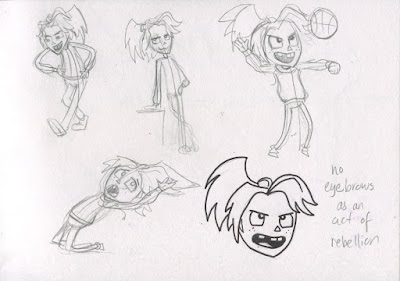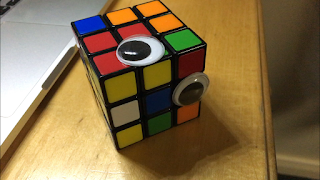Module Evaluation
This module has had an overall positive
impact on me and my development as an animator. One of the reasons this module
was particularly helpful, was that it focused individually on each of the
twelve principles of animation, something I wouldn’t have done otherwise even
though I had heard of them before. This in-depth analysis of the principles
definitely improved my theory and knowledge and it gets visually apparent in my
work towards the end of the module. The tasks provided were also an excuse to
develop my style and seek inspiration and advice.
The peer critique sessions brought in new
ideas and perspectives that were necessary to further refine my work, or give
me a direction to go in when I got lost. It also helped me get a bearing on
where I stand with my work, whether I’m putting too much or too little effort.
I particularly enjoyed animating using
traditional methods: stop-motion, claymation, paper cut-out and cell animation,
which was a change from my usual method of animating. However, on the 132nd
hand-drawn fame of a particular animation, I found that I could get carried
away at times. But in drawing these 132 frames, I developed techniques to
streamline the process (or I might’ve entered a tiredness-induced trance).
I also liked that the tasks were separate
and were not usually related to each other (which meant I wasn’t committed to
anything in particular and this may have prevented quite a few breakdowns from
drawing too many goats). This gave me freedom. And this freedom to explore and
experiment within each task was refreshing, and really helped hone in my
skills.
There were, however, times where this
freedom was too intoxicating, where I had either too many ideas, or none at
all. This meant I ended up developing whole universes in depth, with lots of
characters, their backstories, and motives, only to realize I missed a key
element in the brief. This stems from my tendency to dive right in and start
animating but certain tasks, like Task 10 Staging and Task 3 Appeal, helped me
concentrate and practice planning. I learnt the importance of storyboarding,
and character development, especially in the final task.
Time management was slightly tricky, with
my newly found independence and living on my own, but I found that the tasks
per week were at a comfortable pace. I found myself developing characters or
brainstorming for too long, and then dropping the idea altogether, which meant
I wasn’t very efficient with my time. I’ve learnt to make more rough drawings
in my planning stage to minimize effort while still exploring the brief as
thoroughly as possible so as to not backtrack midway. I managed to stay on top
of the work load, though (but at expense of my soul).
In conclusion, I feel this module has been
a great start to the course, and has cemented my foundation in the basic
principles in animation. With the lessons I’ve learnt and the skills I’ve
gained, I feel ready to take on another module!










